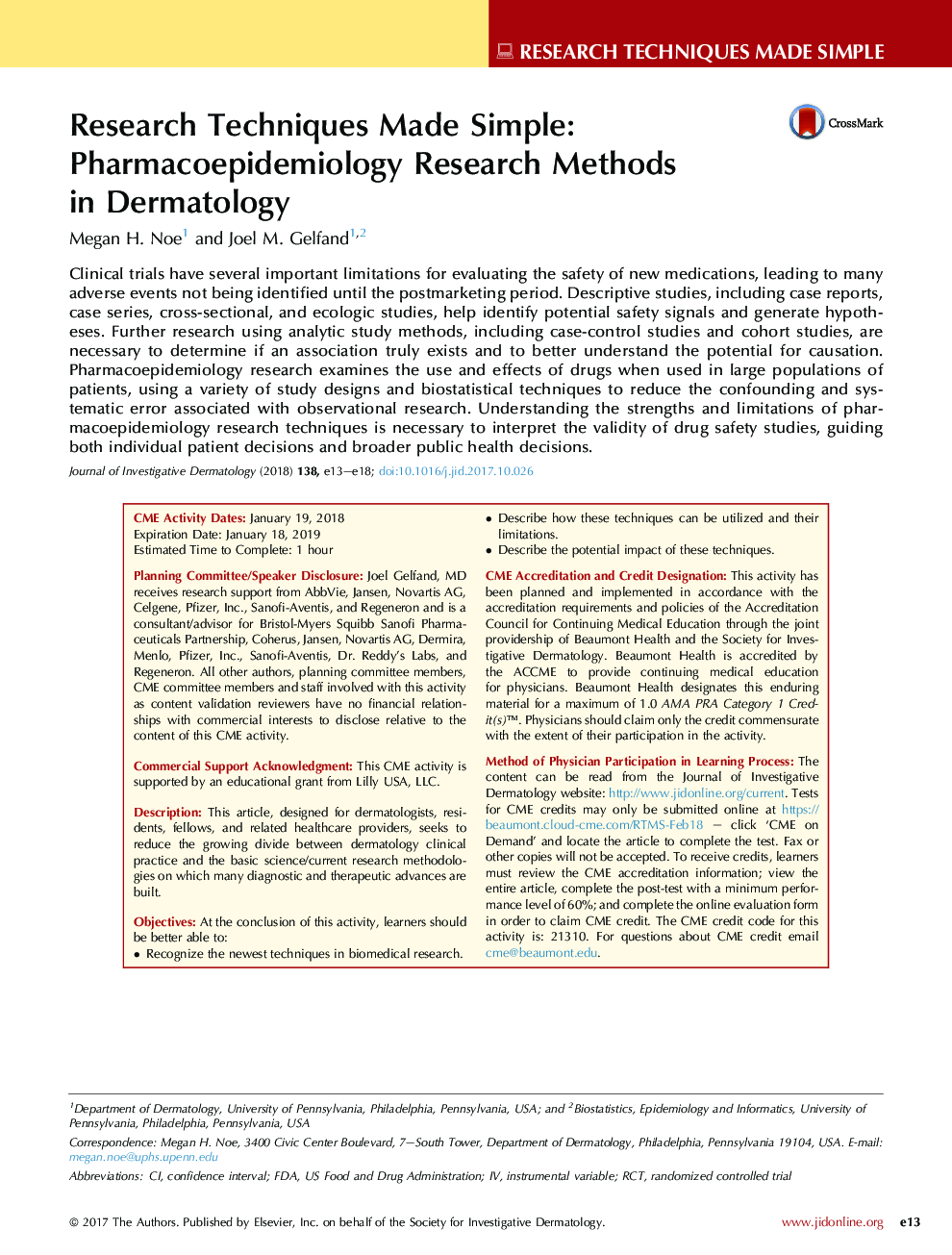| Article ID | Journal | Published Year | Pages | File Type |
|---|---|---|---|---|
| 8716147 | Journal of Investigative Dermatology | 2018 | 6 Pages |
Abstract
Clinical trials have several important limitations for evaluating the safety of new medications, leading to many adverse events not being identified until the postmarketing period. Descriptive studies, including case reports, case series, cross-sectional, and ecologic studies, help identify potential safety signals and generate hypotheses. Further research using analytic study methods, including case-control studies and cohort studies, are necessary to determine if an association truly exists and to better understand the potential for causation. Pharmacoepidemiology research examines the use and effects of drugs when used in large populations of patients, using a variety of study designs and biostatistical techniques to reduce the confounding and systematic error associated with observational research. Understanding the strengths and limitations of pharmacoepidemiology research techniques is necessary to interpret the validity of drug safety studies, guiding both individual patient decisions and broader public health decisions.
Keywords
Related Topics
Health Sciences
Medicine and Dentistry
Dermatology
Authors
Megan H. Noe, Joel M. Gelfand,
